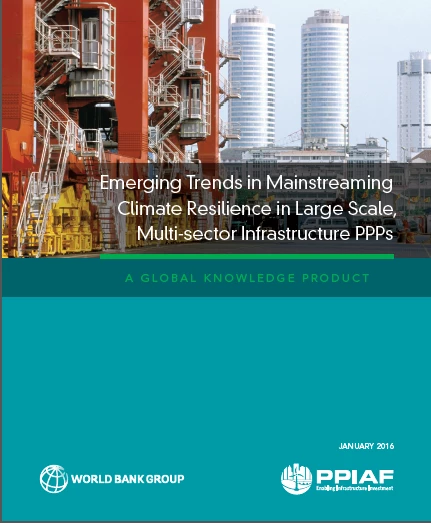
Examples like these are endless.
Alongside these increasing climatic risks to the world’s existing infrastructure assets, the fact remains that many countries desperately need more and better infrastructure. This is particularly true for developing countries. To meet the future infrastructure demands of these economies would require investment of at least an estimated additional $1 trillion a year through 2020.
That’s because the dams, power plants, and roads built today must withstand not yesterday’s or today’s climate, but a future climate that is variable and unpredictable. This presents an opportunity not just for the nations that will ultimately house this infrastructure, but for the decision makers involved in developing and financing infrastructure assets that can withstand climate change. Officials, advisors, and funders involved in developing public private partnerships (PPPs) for infrastructure share in this opportunity to make a difference in how resilience is mainstreamed into infrastructure projects.
PPPs are gaining importance in many developing countries as a way to finance infrastructure assets. However, to date, the traditional risk allocation frameworks for PPPs include limited consideration for climate change risks. This failure to consider climate risks is further exacerbated by a lack of knowledge and appropriate incentive structures in dealing with adaptation and long-term resilience for infrastructure PPP arrangements.
There is increasing need for decision makers involved in the public investment process including that of PPPs to both understand how climate change risks could affect their investments and how to mitigate those risks through financial instruments.
Recognizing that scope probably exists to embed climate considerations into the PPP process, PPIAF, along with the Climate Change Group of the World Bank Group, supported a new paper, “Emerging Trends in Mainstreaming Climate Resilience in Large Scale Multi-Sector Infrastructure PPPs”. It found that extensive bodies of knowledge exist on climate risks to infrastructure and on how to implement PPPs for infrastructure, though there is little overlap between them. This report presents a synthesis of insights from both areas, building on interviews with experts from multilateral development banks, analysis of national policy frameworks for PPPs and adaptation, and a literature review, to identify where these topics do and should overlap.
PPIAF has already begun building on this research to evaluate ways to include climate change considerations into the PPP development process. A related new issue brief from PPIAF, “Climate Risks and Resilience in Infrastructure PPPs: Issues to be Considered,” details how to operationalize the integration of climate considerations into PPPs. This publication provides a preliminary review of PPP contractual arrangements and identifies overarching concerns related to their inflexibility in terms of how climate risks are managed under the existing PPP risk allocation frameworks. Gaps and constraints in existing PPP contractual protection measures are also discussed. The paper aims to engage PPP practitioners as well as governments and their advisors in a broader discussion on how a paradigm shift in thinking will be needed in the way Infrastructure PPPs are planned, developed, procured and implemented.
Have a good idea for "a paradigm shift in thinking"? Please share with us by leaving a comment below!


Join the Conversation